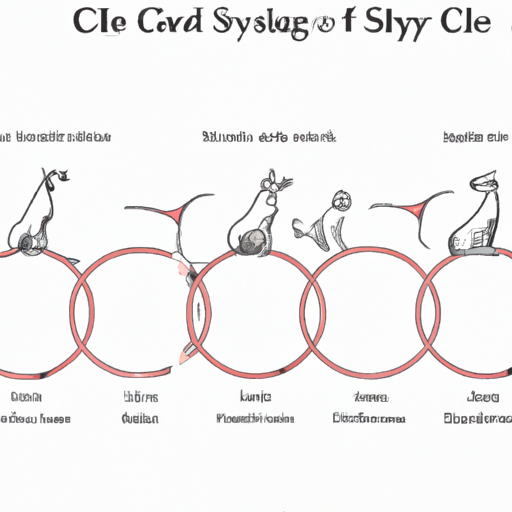Understanding the Canine Heat Cycle
When you’re the caregiver to a female dog, understanding her heat cycle can feel a bit like reading a foreign language. It’s important to remember that every dog is unique and may not adhere strictly to textbook timelines. However, a typical dog’s heat cycle lasts approximately six months and is divided into four stages:
- Proestrus: Lasts about 9 days. Your dog’s body is preparing for estrus but she’s not ready to mate yet.
- Estrus: This is the actual “heat” stage where a female dog can mate. It usually lasts from 9 days to up to 3 weeks.
- Diestrus: Fertility declines at this stage which lasts about 60-90 days.
- Anestrus: A period of rest before the next heat cycle begins.
It’s during the estrus phase that you’ll notice the most pronounced changes in your dog’s behavior and physical appearance.
Recognizing the Signs of Estrus in Dogs
Knowing the signs of estrus can help you better understand and care for your dog during this time. You’ll notice several changes:
- Increased urination
- Swelling in the vulva
- Behavioral changes such as restlessness or clinginess
- Blood or serosanguinous discharge
| Sign | Explanation |
|---|---|
| Increased Urination | Your dog is marking her territory to attract males. |
| Swelling in the Vulva | This is a physical sign of estrus. |
| Behavior Changes | Your dog may become more affectionate, anxious, or agitated. |
| Discharge | Initially, it will be bloody but will lighten as she nears ovulation. |
Caring for Your Dog During Estrus
You can provide the best care by being observant and attentive during your dog’s estrus phase.
- Keep her on a leash during walks to prevent unwanted attention from male dogs.
- Use doggy diapers or special pads to manage the discharge.
- Monitor her eating habits and overall health.
- Offer comfort and companionship as her behavior may change due to hormonal fluctuations.
The Risk of Pyometra
During estrus, your dog’s uterus is more susceptible to infection. Pyometra, a life-threatening condition, is a risk for unspayed dogs and symptoms may appear a few weeks after the estrus phase. Always consult your vet if your dog shows signs such as:
- Vomiting or diarrhea
- Drinking or urinating more than usual
- Loss of appetite
- Swollen abdomen
Frequently Asked Questions
Q: When does a dog first come into heat?
A: Most dogs come into their first heat cycle between six months and one year of age.
Q: Can I prevent my dog from going into heat?
A: Yes, spaying your dog will prevent heat cycles and also eliminate the risk of unwanted pregnancies.
Q: How often does a dog go into heat?
A: Most dogs go into heat approximately twice a year, but it can vary by breed and individual dog.
Q: What should I do if my dog’s heat cycle seems abnormal?
A: Always consult your vet if you’re concerned about your dog’s heat cycle.
Remember, understanding your dog’s estrus cycle is a crucial part of providing the best care for your furry friend.



